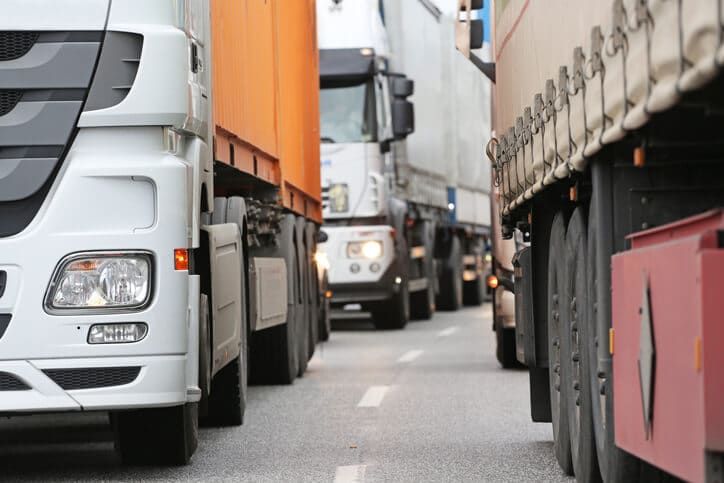 With extreme weather happening every day, there’s no doubt humans have had a profound effect on our environment. Making your fleet more sustainable can reduce that impact and send a positive message to your customers.
With extreme weather happening every day, there’s no doubt humans have had a profound effect on our environment. Making your fleet more sustainable can reduce that impact and send a positive message to your customers.
One of the biggest contributors to environmental pollution comes from vehicle emissions.
According to the EPA, 29% of all U.S. greenhouse gas emissions in 2017 came from vehicles and transportation. This makes vehicle travel the biggest source of emissions overall.
All vehicles emit worse pollutants than CO2, as well. In fact, passenger vehicles are responsible for over half of carbon monoxide and nitrogen oxide gasses emitted in 2013, as well as nearly a quarter of the hydrocarbons.
Since fleet vehicles tend to emit gasses in bulk, fleet managers who are concerned about the environment have a larger responsibility at their feet. They must decide how to not only lower costs through things like affordable fleet protection plans, they must also figure out how to reduce emissions in an effective and measurable way.
To inspire eco-conscious fleet managers, here are five tips your team can use to improve its commercial fleet’s sustainability:
Reduce Fleet Trips
The biggest source of emissions is the trips themselves. No matter how much you boost the fuel efficiency of your fleet, you’ll still contribute a significant amount of pollution if you’re driving often.
To reduce the volume of fleet trips, set policies that encourage carpooling of associates rather than people taking separate rides. If you have multiple salespeople going into the same city at once, for instance, have them carpool together and coordinate their schedules whenever possible.
When it comes to making deliveries or doing errands, try to do it all in batches. Route trips efficiently with a priority set on minimizing miles traveled.
To back up your sustainability initiative, you can measure miles traveled to set benchmarks and travel reduction targets.
For when trips can’t be avoided — which can be the case for many organizations that employ large fleets — fleet managers can make the most of telematics data from employee devices, such as their route-finding apps. Layering trip data and other information can help managers optimize routes and set policies on route-finding for employees straying off the beaten path.
Keep Your Fleet Serviced
Vehicles in poor repair tend to be a huge contributor to emissions. They may also fail their annual emissions test, putting them off the road and requiring fees and repairs to get them back on — losing money all the while.
Keeping vehicles serviced improves their performance, improves fuel efficiency, and reduces emissions.
Consider Upgrading to Newer, More Efficient Models
If you have an older fleet, your vehicles may be struggling no matter how many repairs they get. Older vehicles also tend to have poorer fuel mileage and fewer emissions reduction technology.
If you have a sustainability initiative, it may make the most sense (and cents) to simply replace your fleet. You can even invest in hybrid or electric vehicles, many of which offset the cost difference through generous subsidies, tax credits, and other incentives.
Install Telematics and Monitoring Software
Installing onboard telematics and vehicle monitoring software can be a contentious thing for fleet users, understandably. No one likes feeling like they have a “nanny cam” watching them while they drive.
At the same time, these devices have been shown to improve driver safety and reduce accidents. They encourage better driving behaviors and discourage things like aggressive acceleration, which can cause fuel mileage to dip into the single digits in heavier vehicles.
Many insurance companies also offer financial incentives to companies that install monitoring devices.
It’s not all about punishing drivers, either. Drivers may not be aware of certain unsustainable habits, and reports generated by the monitoring devices relay important feedback to help them improve.
On a company-wide scale, telematics data can help organizations optimize their routes, pinpoint pollution sources, and track initiatives to improve emissions and sustainability overall.
Driver Training and Incentives
Finally, the drivers of your fleet themselves may need a little nudge in the right direction. Some drivers are not aware of how impactful certain behaviors can be. They may also not have personal mental goals to drive in a more sustainable way.
Fleet driver training can not only improve emissions and sustainability for fleet vehicles, but it can also improve driver safety.
Safer drivers having a friendlier impact on their environment can have a huge halo effect on your company, and it also lifts your bottom line while giving everyone something to feel proud of. That’s something that can definitely make everyone feel good.
We are here to provide the best fleet roadside assistance plans. Contact us today to learn more.

Comments are closed